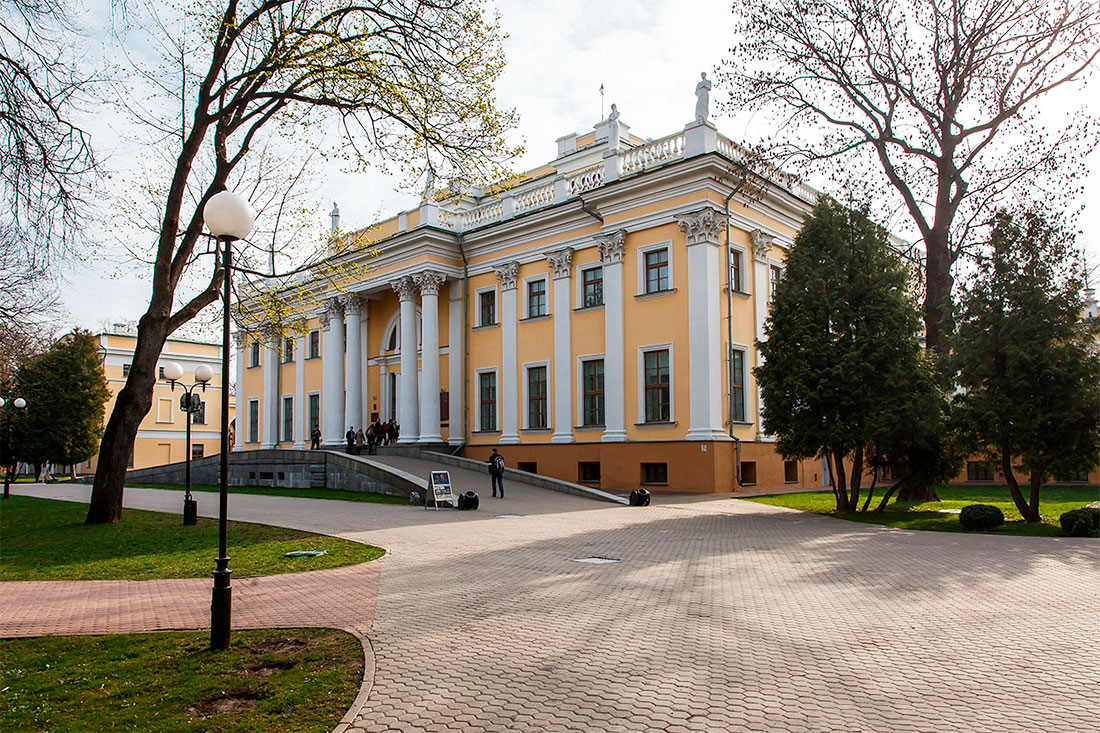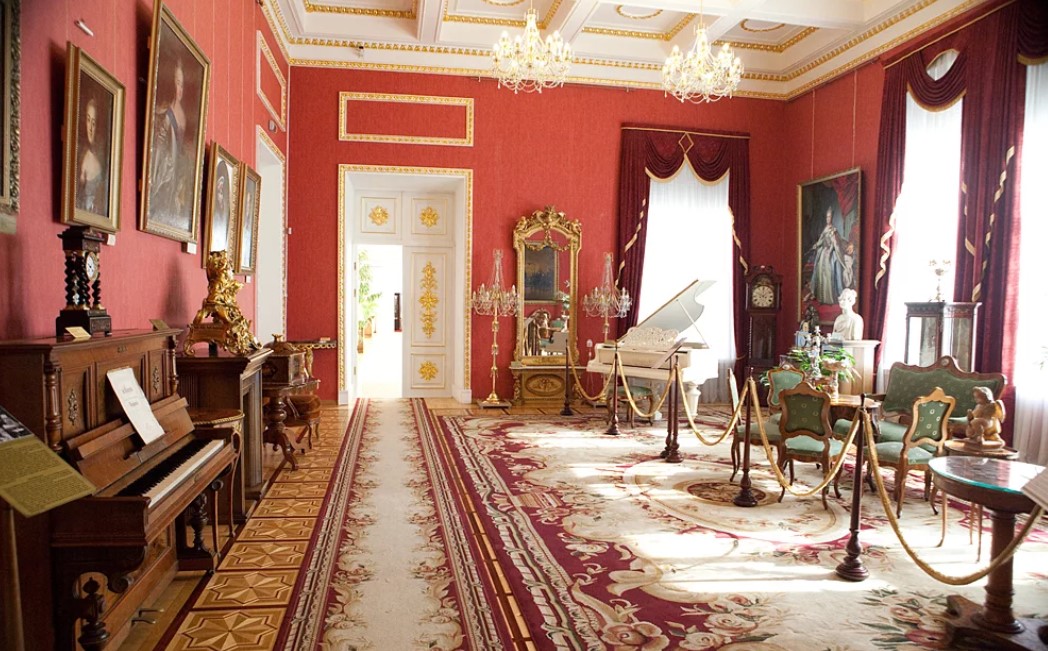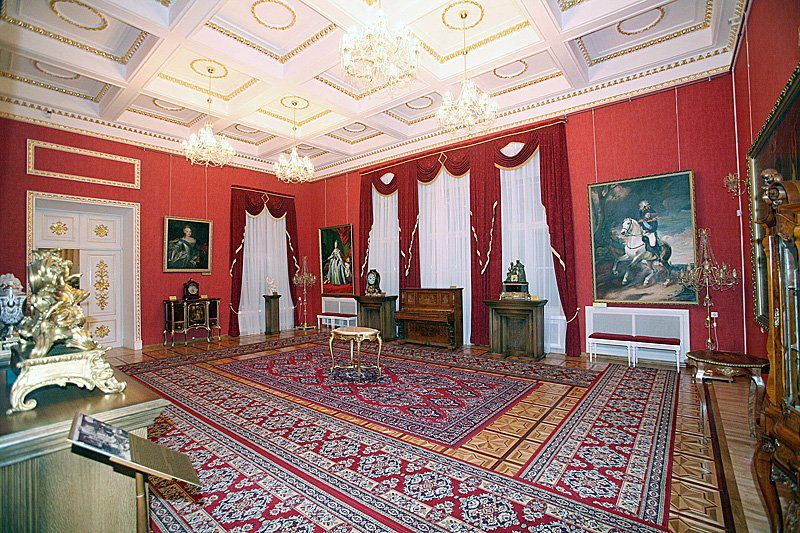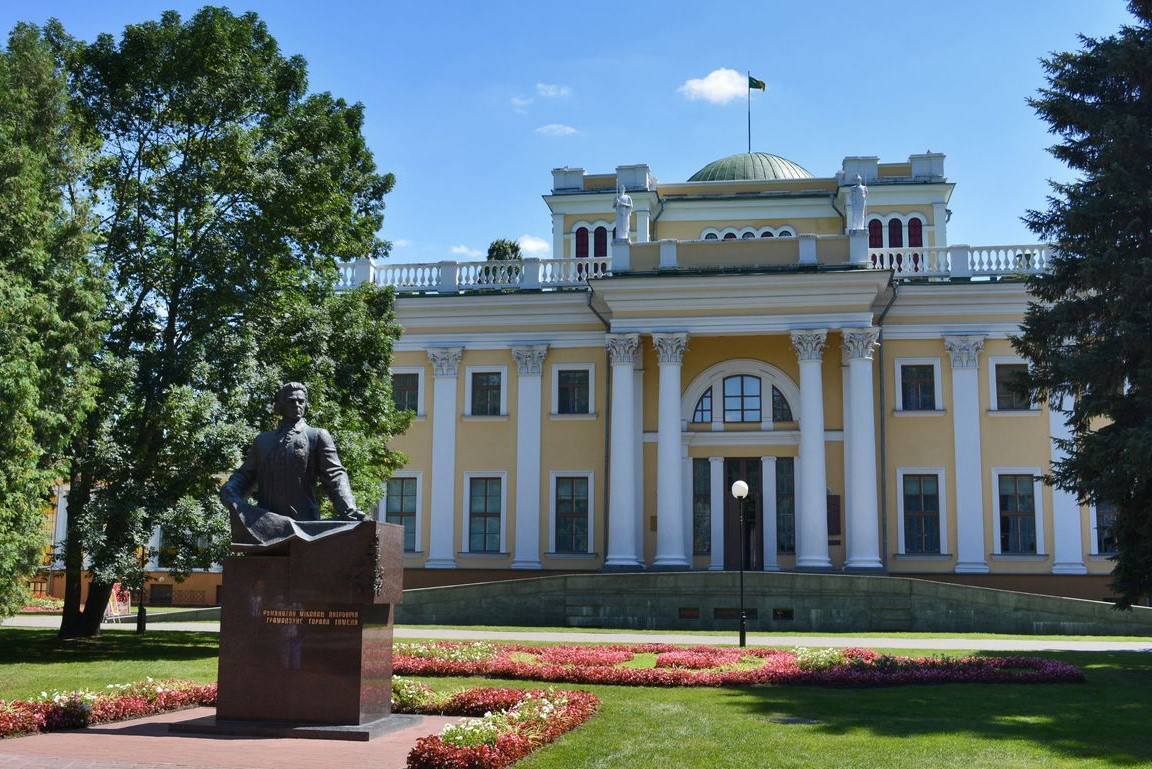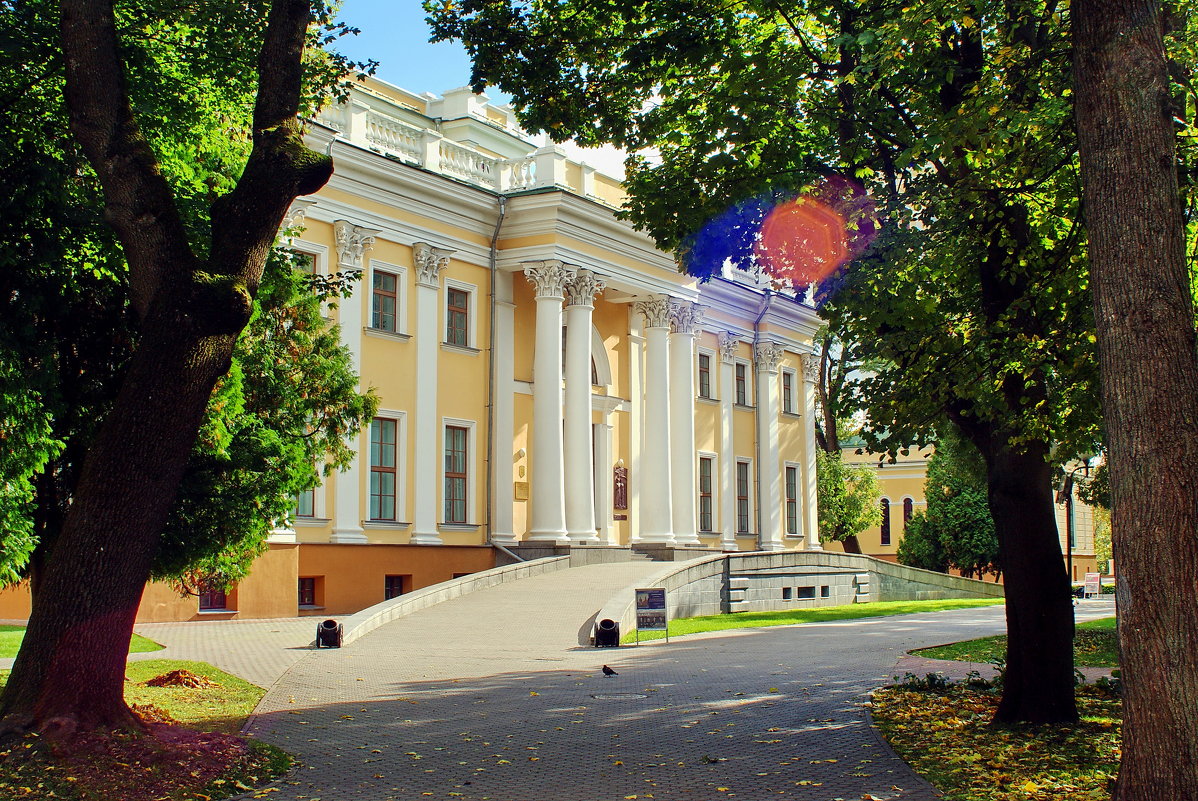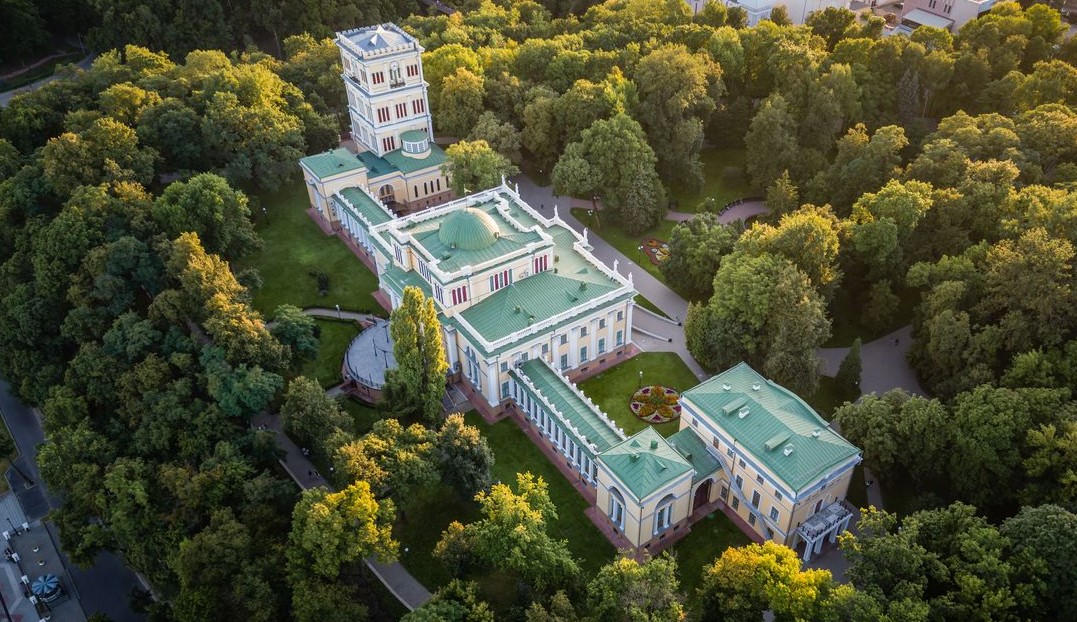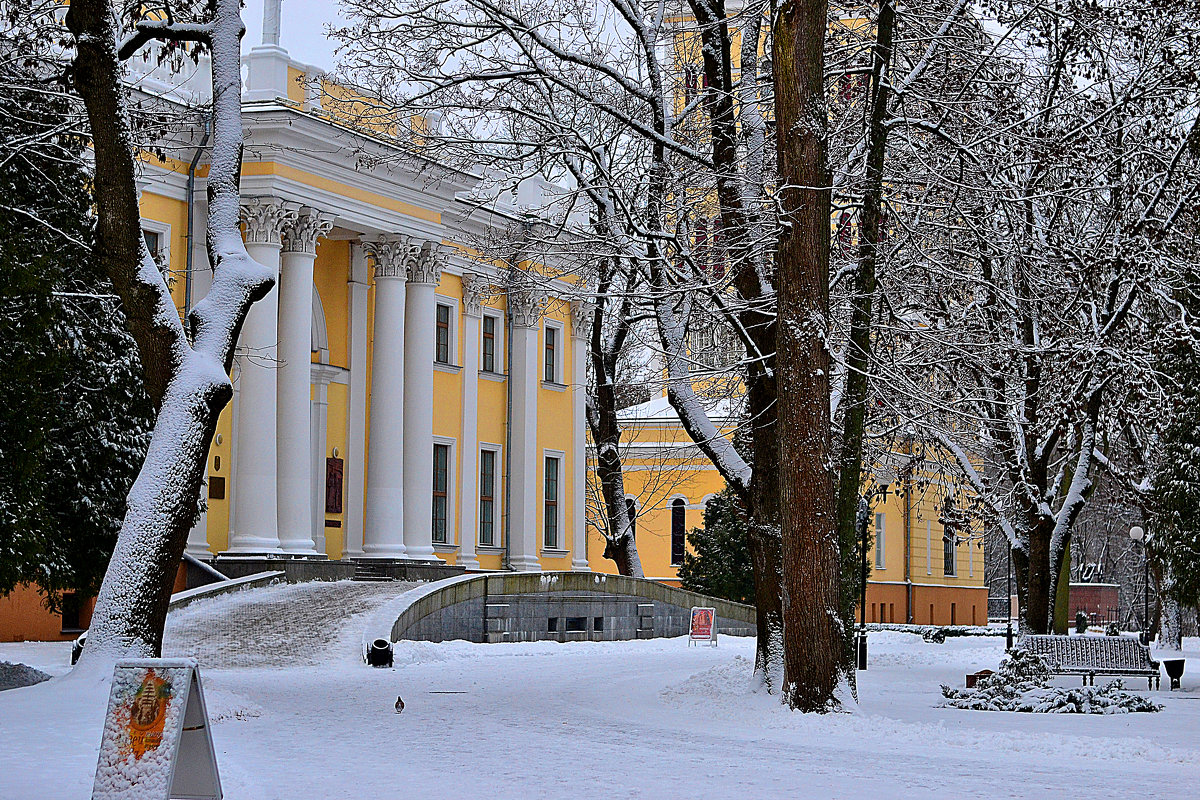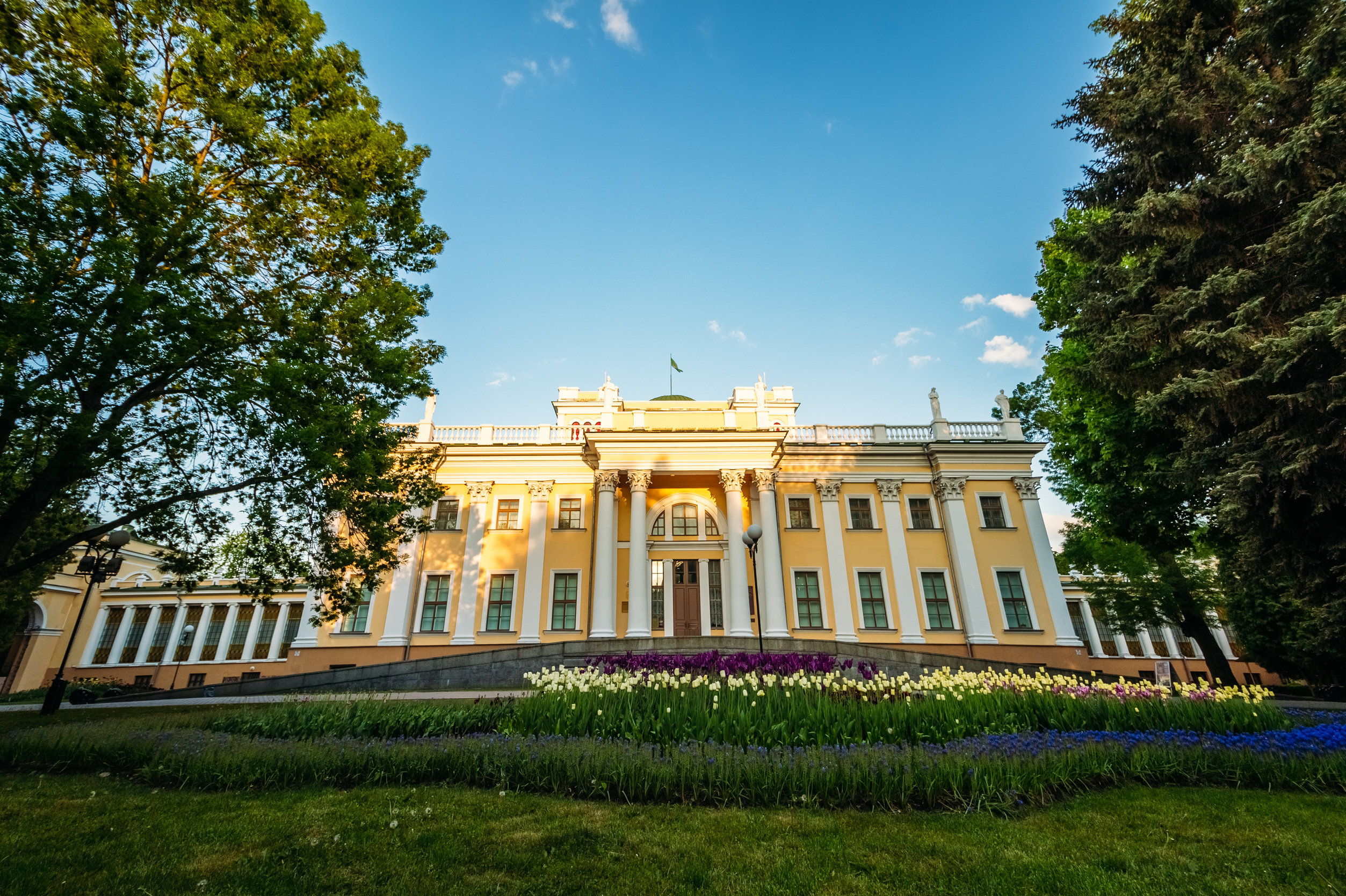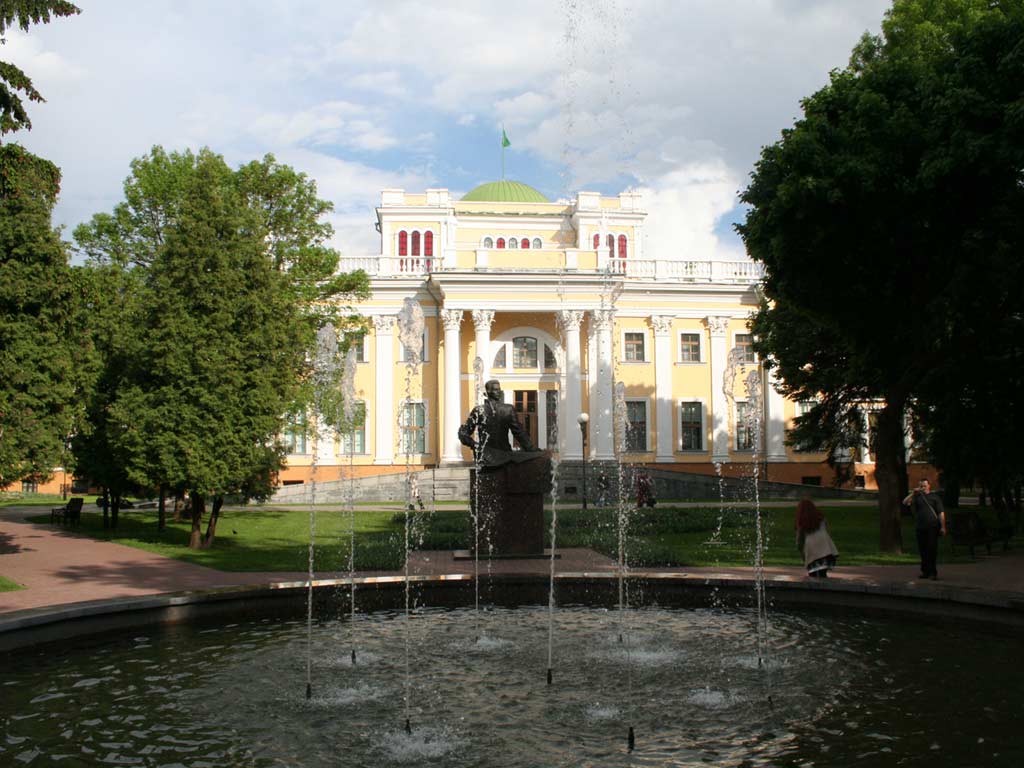Palace History
The history of the noble residence begins in the XVIII century when Catherine II gave P. Rumyantsev a small town called Gomel as a reward for his military merits. She also allocated funds for the construction of the count's residence. The two-story palace became an architectural model of Palladianism – a direction of early classicism inspired by the works of the Italian architect A. Palladio. This style can be seen both in the monumental appearance of the building and in the details of the interior.
The first floor of the building was occupied by ceremonial halls, the second housed living rooms, and the basement was used to house servants and for household needs.
After the death of Count Rumyantsev, his sons inherited the palace, one of whom subsequently sold the family residence to the state.
At the beginning of the XIX century, the new owner of the palace was military leader Ivan Paskevich. On his order, the building was reconstructed, and a picturesque park was laid out on the adjoining territory, where exotic plants from different parts of Russia and Europe were brought in. The park became an embodiment of beauty and luxury - elegant gazebos, magnificent lawns, exquisite sculptures - every detail spoke of wealth and high artistic taste of the estate owners.
For many years, the palace was a venue for balls, festive events, and also served as a repository for private art collections. Important guests often stayed here, including representatives of the Romanov imperial family.
The Paskevich family owned the palace until the revolution, after which the building was confiscated. In 1919, a museum was established here, the basis of which was the collections gathered by the owners of the residence over the years.
During the war, the Rumyantsev-Paskevich Palace was damaged, like most of the buildings in Gomel. After the victory over the fascist invaders, the building was restored and the museum reopened in it.
In 1995, a decision was made to restore the architectural landmark of Gomel. The result of this restoration work was the refurbished interiors of the XVIII-XIX century rooms. Opposite the building, a monument to the first owner of the residence, Peter Rumyantsev, was erected.
The current state of the Rumyantsev-Paskevich Palace
Today, the palace and park ensemble is one of the most impressive architectural monuments of the Gomel region. The former noble residence surrounded by a park is the embodiment of the beauty and harmony of the classical style. Visitors come here daily to view the museum's exhibition, admire the antique interiors, and learn how the noble Rumyantsev and Paskevich families spent their days.
The palace guests can visit the first floor, where the White and Red living rooms, the Column Hall, and the ceremonial reception room are located. The museum collection of the palace consists of collections that have been gathered by the owners of the noble residence over the years. It includes:
- Paintings;
- Church utensils;
- Ancient books;
- Samples of icon painting;
- Weapons;
- Coins;
- Antique items from the Catherine era;
- Personal belongings of the former owners of the palace.
Guides will tell visitors legends about the ghost of Princess Irina Paskevich and stories about the mysterious shadow that is periodically seen in the Paskevich mausoleum. As part of the tour, you can see the chapel-mausoleum itself, look into the St. Peter and Paul Cathedral, visit the greenhouse, created by order of F. Paskevich in one of the sugar factory buildings, climb the observation tower, from which there is a view of the city. And, of course, be sure to take a walk in the park – a favorite place for the residents of Gomel to rest. It will charm you with its fountains, shady alleys, a picturesque swan pond, across which a fairy-tale-like bridge is spanned.
You can reach Gomel from the capital and other regional centers by train or bus. The palace and park complex are located right in the city center. You can reach here from the station by public transport or by walking along Lenin Avenue, which leads straight from the Railway Station Square to the park.
